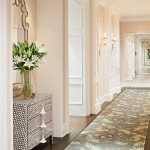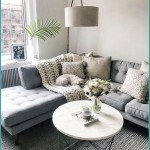How Do You Decorate Your Bedroom?
The bedroom serves as a personal sanctuary, a space for relaxation and rejuvenation. Its decoration should reflect individual tastes and promote a sense of tranquility. A well-decorated bedroom can significantly impact sleep quality and overall well-being. This article explores various aspects of bedroom decoration, providing a comprehensive guide to creating a personalized haven.
Establishing a Theme and Color Palette: Before initiating any decorating project, establishing a clear theme and color palette is essential. A cohesive theme provides direction and ensures a harmonious final result. Themes can range from minimalist and modern to rustic and bohemian. The color palette should complement the chosen theme and evoke the desired mood. Soft, neutral tones often create a calming atmosphere, while bolder colors can energize the space. Considering the room's size and natural light is crucial when selecting colors. Darker colors can make a small room feel cramped, while lighter colors can brighten a space.
Selecting Appropriate Furniture: Furniture selection plays a vital role in bedroom aesthetics and functionality. The bed is the focal point of the room and should be chosen based on comfort and size requirements. Nightstands provide convenient storage and surface area for lamps and other essentials. A dresser or chest of drawers offers additional storage for clothing and personal items. Consider incorporating a comfortable seating area, such as an armchair or chaise lounge, for reading and relaxation. The furniture style should align with the chosen theme and complement the room's overall aesthetic.
Utilizing Wall Decor and Artwork: Wall decor and artwork can significantly enhance the visual appeal of a bedroom. Paintings, prints, photographs, and tapestries can add personality and create focal points. A gallery wall featuring a collection of framed artwork can personalize the space and showcase individual interests. Mirrors can create an illusion of spaciousness and reflect natural light. The chosen artwork should complement the room's color palette and theme.
Incorporating Textiles and Soft Furnishings: Textiles and soft furnishings play a critical role in creating a cozy and inviting atmosphere. Bedding, including sheets, blankets, and comforters, should be chosen for both comfort and aesthetic appeal. Throw pillows and blankets add texture and visual interest. Curtains or blinds provide privacy and control light levels. Rugs can define different areas within the room and add warmth underfoot. The choice of textiles should consider the room's overall design and color scheme.
Optimizing Lighting for Ambiance and Functionality: Lighting is crucial in creating the desired ambiance and ensuring functionality. Ambient lighting provides overall illumination for the room. Task lighting, such as bedside lamps, is essential for activities like reading. Accent lighting can highlight specific features or artwork. Layering different types of lighting allows for flexibility and creates a dynamic atmosphere. Consider using dimmer switches to control the intensity of light and create different moods.
Maximizing Storage and Organization: Effective storage solutions are essential for maintaining a clutter-free and organized bedroom. Built-in wardrobes and closets maximize storage space. Under-bed storage containers can house seasonal items or extra bedding. Shelving units provide space for books and decorative objects. Utilizing organizers and dividers within drawers can help maintain order and maximize storage capacity.
Personalizing the Space with Accessories: Accessories are the finishing touches that personalize a bedroom and reflect individual style. Decorative objects, such as vases, sculptures, and candles, can add personality and visual interest. Plants can enhance air quality and create a sense of tranquility. Personal photographs and mementos can add sentimental value and create a sense of belonging. Carefully chosen accessories can elevate the overall aesthetic and create a truly personalized space.
Considering the Room's Layout and Functionality: The layout of the bedroom should be carefully considered to maximize space and functionality. The bed placement should be strategic, allowing for easy access and optimal flow within the room. Furniture placement should be balanced and avoid overcrowding. Traffic flow should be unobstructed, allowing for easy movement throughout the space. Consider the room's primary function and arrange furniture accordingly.
Maintaining a Clean and Organized Environment: Maintaining a clean and organized bedroom is crucial for promoting relaxation and well-being. Regular cleaning and dusting can prevent the accumulation of allergens and create a healthier environment. Decluttering regularly can help maintain a sense of order and prevent the space from feeling overwhelming. A clean and organized bedroom contributes to a more peaceful and restful atmosphere.
Budgeting and Prioritizing Expenses: Setting a budget and prioritizing expenses is essential when embarking on a bedroom decorating project. Determine the overall budget and allocate funds to different aspects of the project, such as furniture, textiles, and accessories. Prioritize essential items and consider cost-effective alternatives where possible. Careful budgeting can ensure that the project stays within financial constraints while achieving the desired aesthetic.

How To Decorate Your Bedroom Without Spending Much Mum In The Madhouse

Temporary Decorating Tricks Every Girl Should Know Teen Vogue

7 Simple Summer Bedroom Decorating Ideas Setting For Four Interiors

How To Decorate Your Bedroom Walls Ekbb

9 Diy Ideas To Decorate Your Bedroom

How To Decorate A Bedroom 10 Tips Create Beautiful Real Homes

How To Decorate Your Room In 7 Easy Steps

Kitchen And Residential Design How To Decorate Your Bedroom For A Calming Effect
What Are Some Cool Ideas For Decorating My Room Quora

12 Tips For Decorating The Bedroom As A Couple







